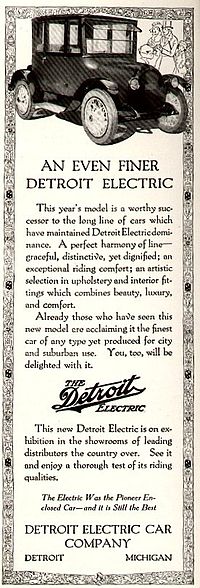Electric Cars A New Invention? Think Again.
26 Apr
Posted by RD Bentley as Future Tech, Going Mobile
 We are enjoying a technological revolution, 21st century Anno Domini and beyond. Our forefathers could only dream of technology such as computers, handheld devices, digital cameras, smartphones, tech gadgets, and electric cars. No, wait a second…Electric cars in 1896? So you thought that electric cars were the new kids on the invention block? Think again.
We are enjoying a technological revolution, 21st century Anno Domini and beyond. Our forefathers could only dream of technology such as computers, handheld devices, digital cameras, smartphones, tech gadgets, and electric cars. No, wait a second…Electric cars in 1896? So you thought that electric cars were the new kids on the invention block? Think again.
“On September 7, 1896, an electric car built by the Riker Electric Motor Company wins the first auto race in the United States, at the Narragansett Trotting Park—a mile-long dirt oval at the state fairgrounds that was normally used for horse racing—in Cranston, Rhode Island,” and this is another famous day in history.
The first installation of an electric motor in a vehicle would develop around 1890 or 1891; a six-passenger wagon capable of reaching a speed of 14 miles per hour.
By 1897, electric vehicles were used as New York taxis.
In 1911, we get the first gasoline-electric hybrid car, so even the hybrid is not new as we thought.
Believe it or not, the 20 miles-per-hour electric car was a better deal than other alternatives on the market at the time. No steam, no gears to bother with, no cold starts, no vibration, no smell of gas, and no manual cranking of engines gave the electric car an edge.
By 1912, electric cars had outrivaled the competition and there were 33,842 registered electric cars in the United States. Yes, this is almost hard to imagine!
For the massive price of $1000 you could drive around in your fine electric carriage, yet there were limitations due to infrastructure.
By 1916, the price dropped to $360 for the basic gasoline car and sales peaked at 472,000. The gas automobile was king and it was here to stay.
By 1920, gasoline automobiles had completely dominated the market. Gas powered motors obviously gained the advantage because they were more flexible by design and the availability of gas was most convenient. Henry Ford and the mass production of automobiles changed America forever.
The electric car for the most part remained an urban phenomenon, and while it would never totally die into total obscurity, it had almost but disappeared into the sunset. There were a number of industrial applications where electric fit nicely. There were electric forklifts in 1923, electric golf carts in 1954, and in 1971 the electric car would be driven on the Moon. Now that’s quite an honor for the electric powered moon buggy.
It seemed that the electric car finally achieved status in the 21st century, especially with brands like Tesla. Petrol-too-expensive became a recurring theme that reigned in significantly with motorists. And besides, the Tesla is a status symbol itself. How far can you go in a Tesla? “The Model S has three battery options. The largest battery supplies 300 MILES OF RANGE at 55 MPH.”
The electric car has come a long way baby!
Subscribe Now!
Featured Deal ➸
Social Button ➸
Categories
Archives
SQUIDBOARD
Academic Tech
Multimedia MegloMania
Tech Toolbox
- Acronis
- AN/GRC-9
- Apple Final Cut Pro
- Audacity
- Audacity VST Plug-ins
- BleachBit
- ClimateViewer 3D
- Cool Edit Pro 3.1
- CyberGhost
- Flickr
- FreeSCAN
- fring
- Fruper
- FTA Lists
- GPS Calculator
- GPS Converter
- HAMSOFT
- HF Antennas
- inSSIDer
- Levelator
- MaxMind
- Microphone Cables
- Morse Code Chart
- Old Version
- Pendriveapps.com
- PortableApps.com
- Privacy Badger
- PulseAudio
- Rowetel
- ShopJimmy
- Teleprompter Software
- TV Listings
- UNetbootin
- Voicemeeter Banana
- Winlink
One Response
tech news sites
December 2nd, 2018 at 2:54 am
1I am regular visitor, how are you everybody? This piece of writing posted at this site is in fact
good.
RSS feed for comments on this post · TrackBack URI
Leave a reply